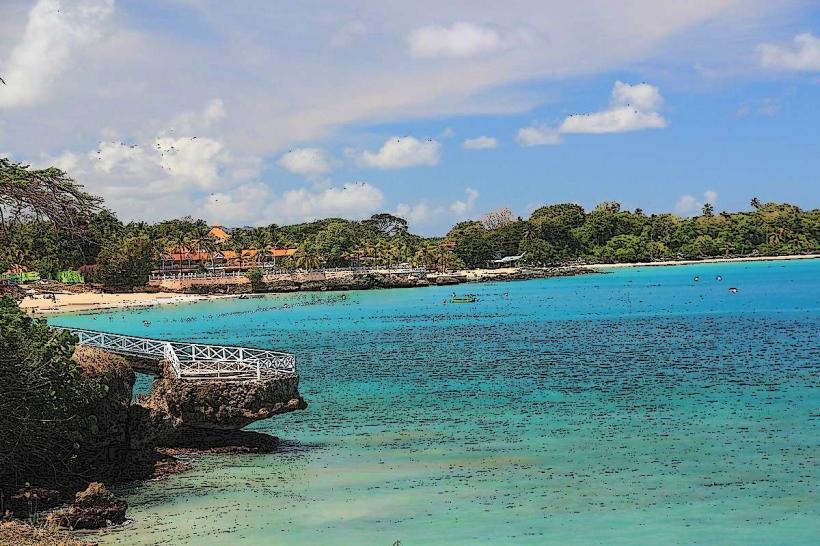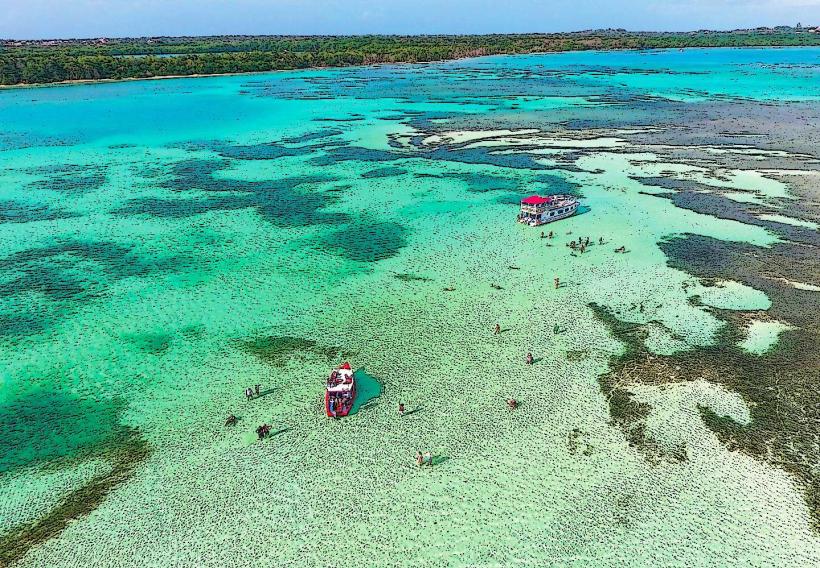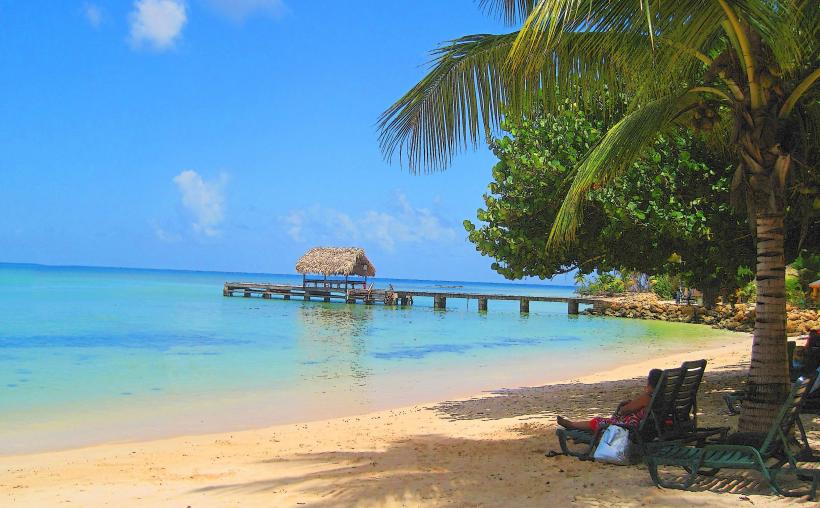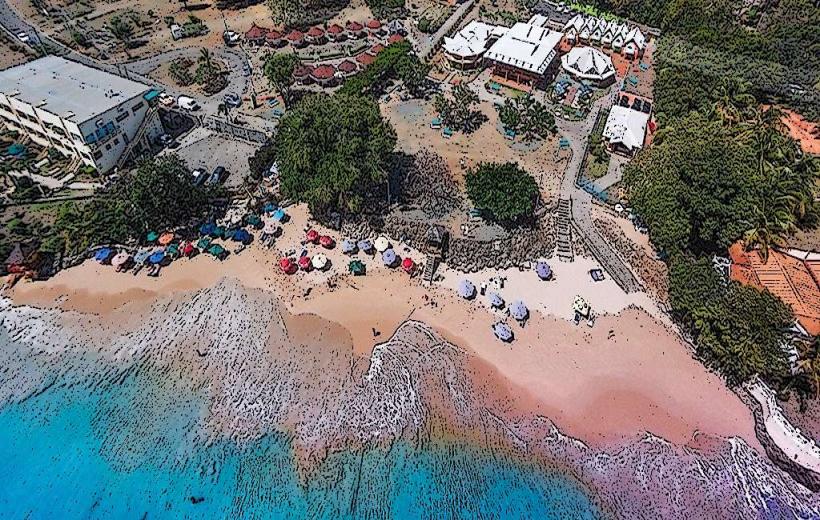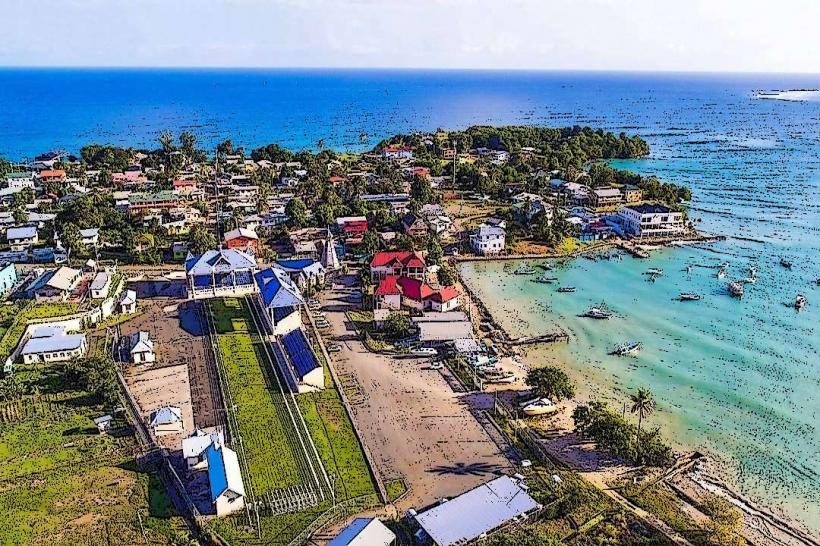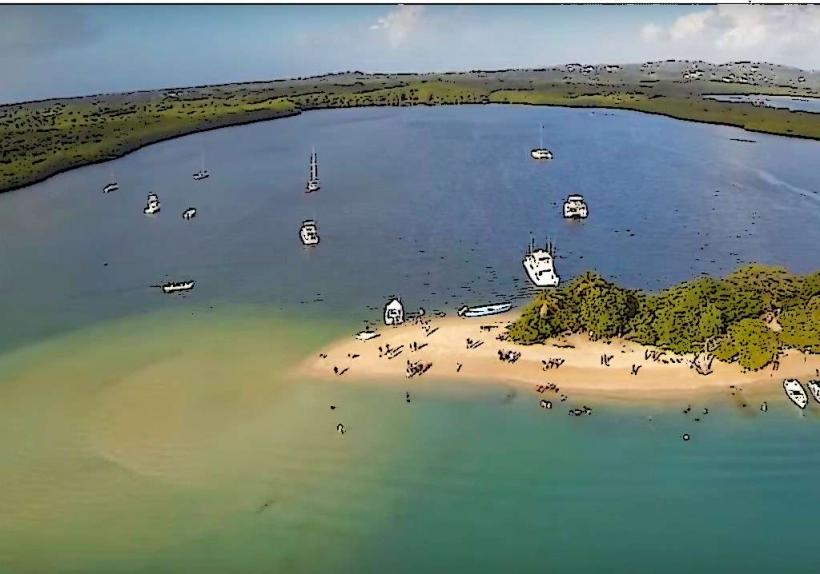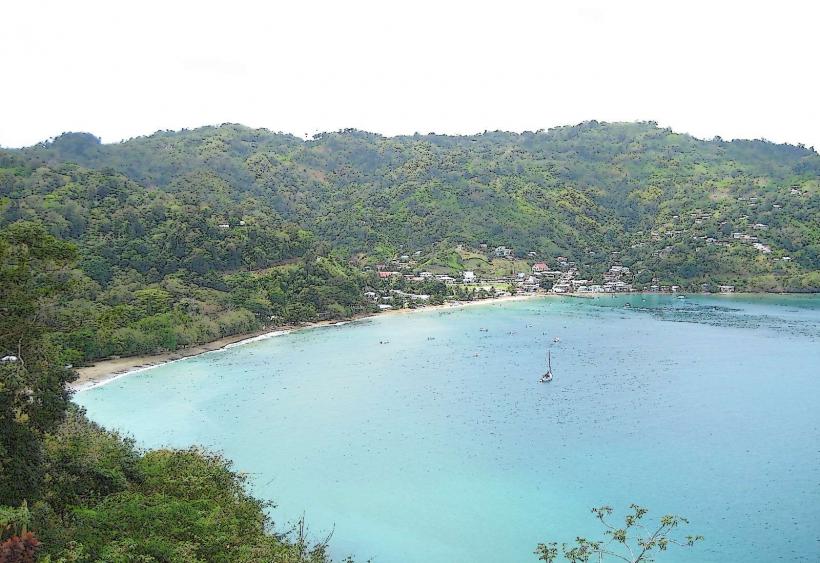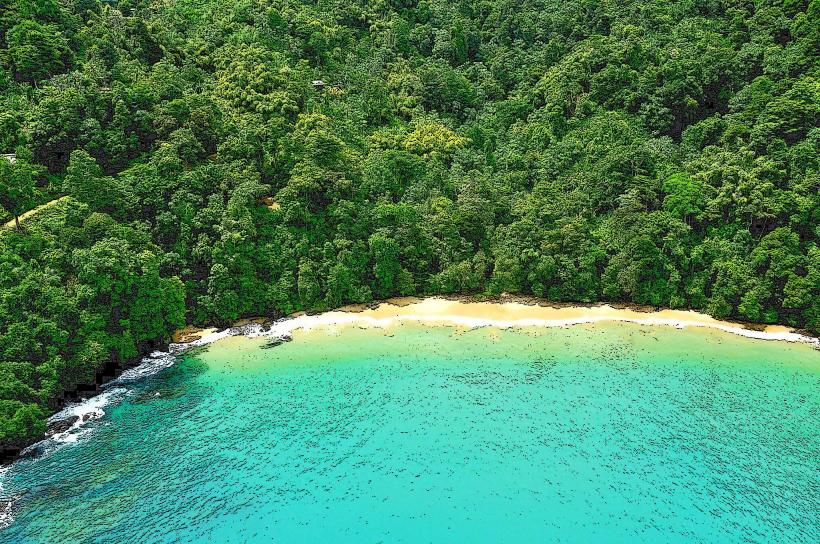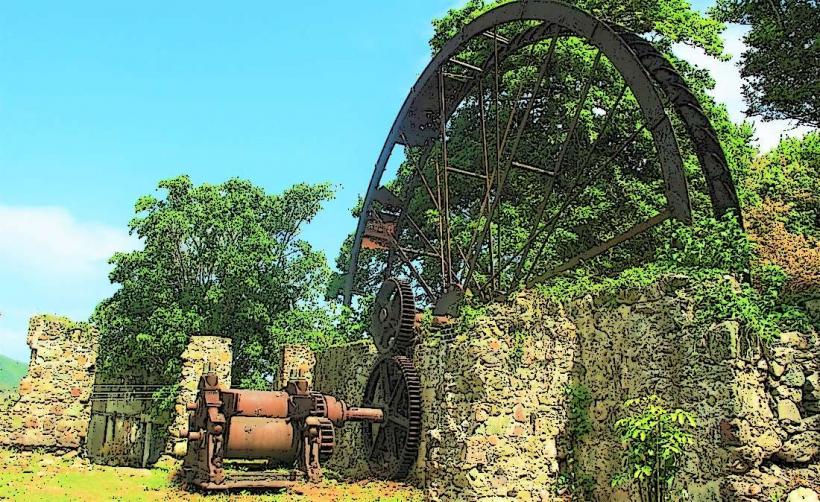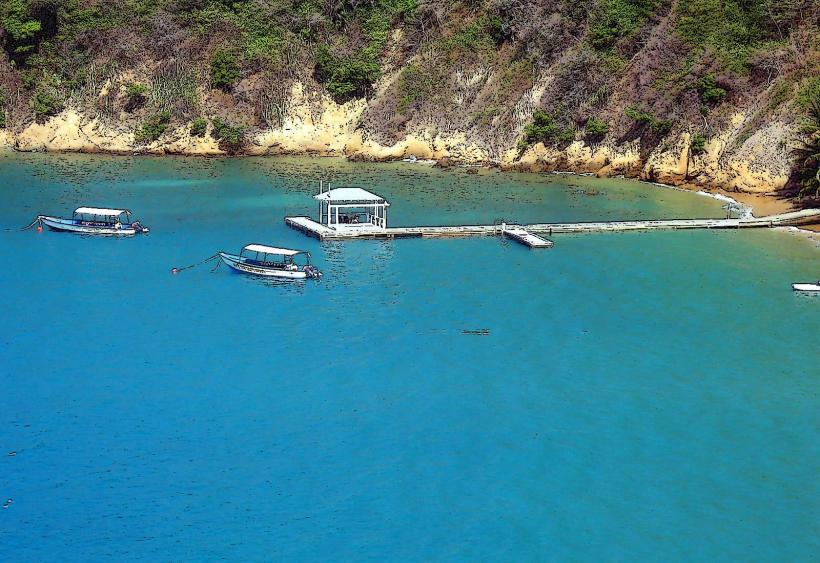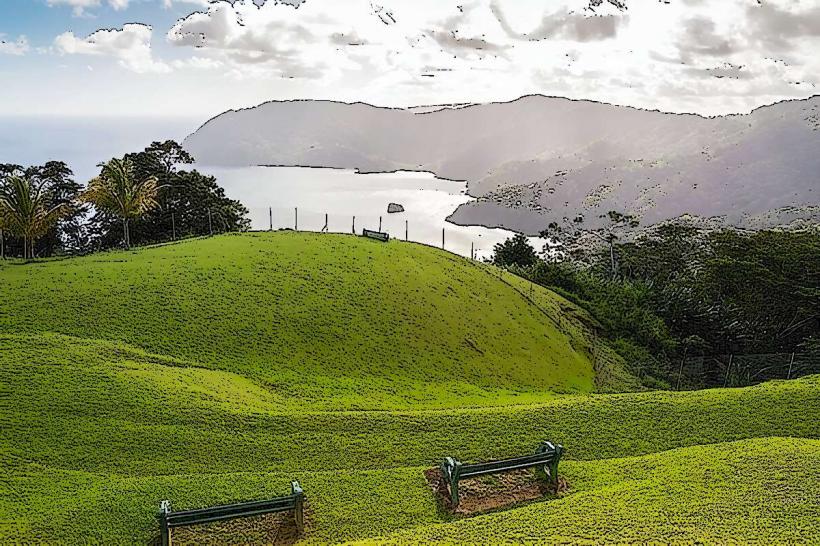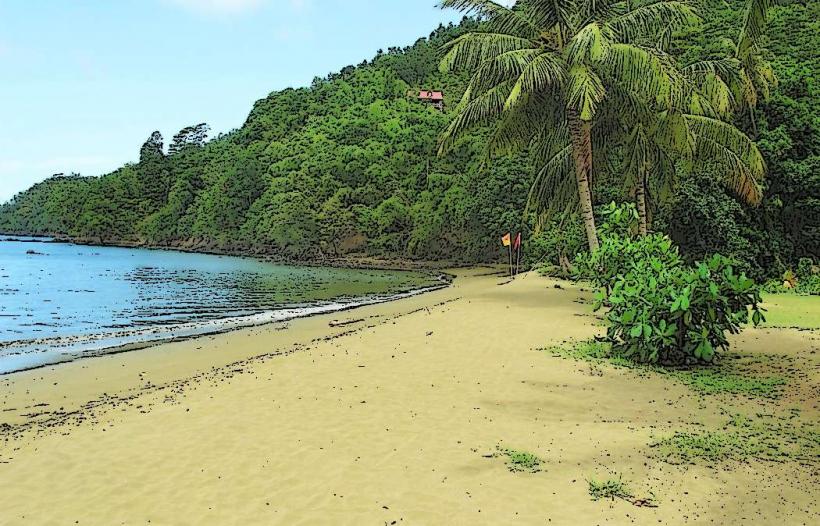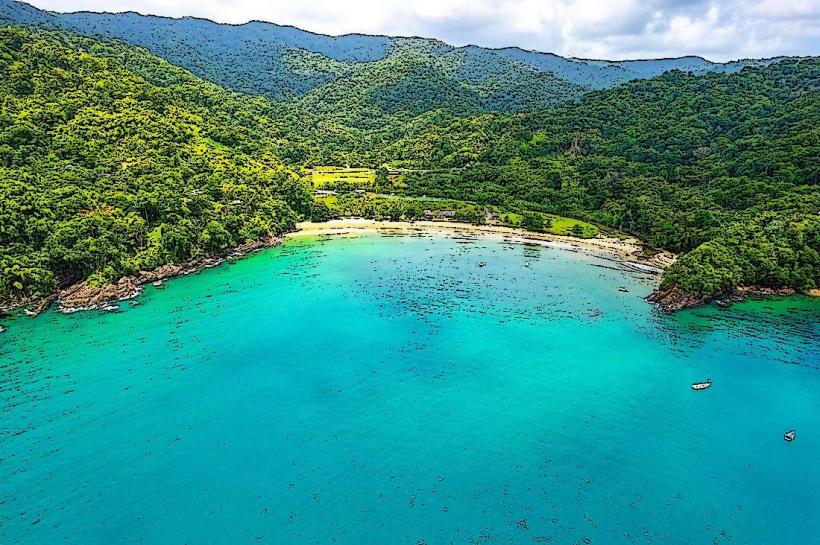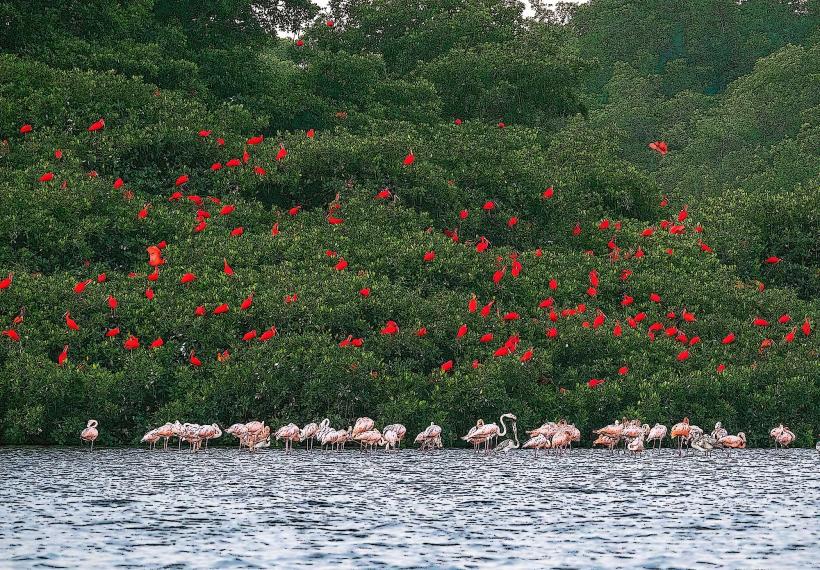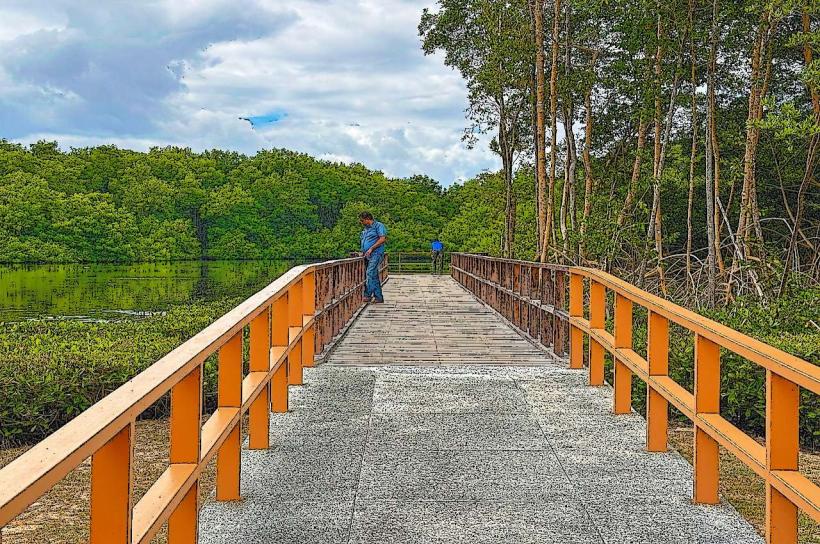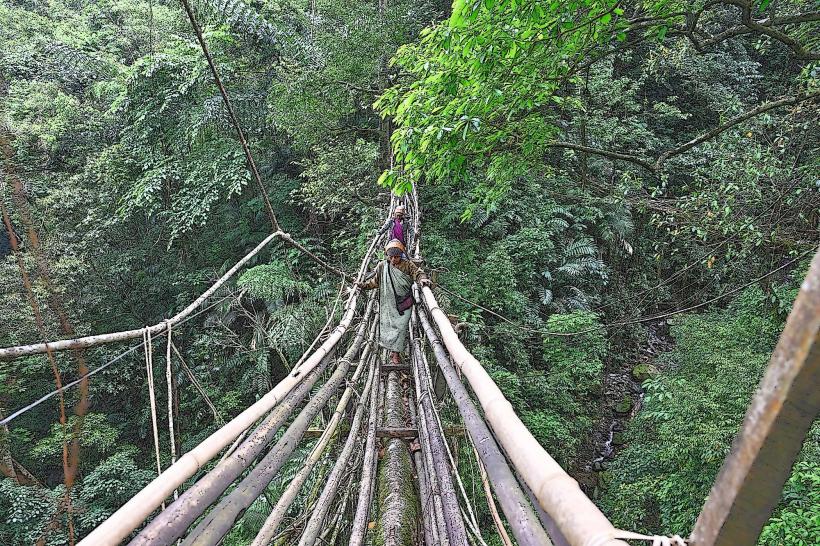Information
Landmark: Caroni Rice FieldsCity: Tobago
Country: Trinidad and Tobago
Continent: North America
The Caroni Rice Fields are located in the Caroni region of Trinidad, primarily within the Caroni Plains, which stretch across a vast area of lowland terrain. The region is historically significant as one of the main agricultural zones in Trinidad, known for its extensive rice cultivation. The rice fields play a central role in the island’s agriculture, contributing to local food production and the cultural heritage of the area.
1. Location and Overview
- The Caroni Rice Fields are located in the Caroni Plains, an area that spans much of the central part of Trinidad, situated between the Caroni River and the Northern Range. The fields themselves are situated within the Caroni River watershed and are largely flat, with rich alluvial soil ideal for rice cultivation.
- The rice fields are part of the larger Caroni Agricultural District, which has been historically dedicated to the cultivation of rice, sugarcane, and other crops.
2. History and Importance
- Agricultural History: Rice farming in Trinidad dates back to the 18th century, with the introduction of the crop by colonial settlers. The Caroni region quickly became known as a major rice-producing area, and rice cultivation has continued to be a key agricultural practice in the area.
- The region was once home to large-scale, state-run rice production operations, particularly during the 20th century, and the rice fields were managed as part of the national food security program. Though commercial rice farming has decreased in recent decades due to various economic and environmental factors, rice remains an important crop for local farmers.
- The Caroni Rice Fields are part of the Caroni River Basin and the area is of great historical and cultural significance to the Caroni community. Local farmers and agricultural workers continue to maintain smaller, independent farms in the region.
3. Agricultural Practices
- The rice fields in the Caroni region typically follow traditional paddy farming methods, involving the cultivation of rice in flooded fields. The rice paddies are flooded with water during the growing season, allowing the crop to grow in these semi-aquatic conditions.
- Irrigation systems: The rice fields rely on an extensive network of canals and drainage systems to control water levels and ensure that the fields are adequately irrigated. Water is drawn from the nearby Caroni River and other sources to flood the fields during planting and growing periods, and drainage channels ensure that water levels are managed throughout the harvest cycle.
- The soil in the Caroni Rice Fields is particularly fertile, thanks to the sediment deposited by the Caroni River, making it well-suited for rice production.
4. Rice Varieties
- The Caroni Rice Fields primarily produce Indica rice, the long-grain variety commonly grown in tropical and subtropical climates. This rice is typically used for table consumption, as well as in the production of rice flour for local dishes.
- The region also produces local rice varieties, some of which are favored in traditional Trinidadian cuisine. Local rice is used in a variety of dishes, including pelau, curried rice, and the popular rice and peas.
- The fields once supported large commercial-scale production of rice for both local consumption and export, though today the focus is more on local, small-scale farming.
5. Ecological Impact and Environmental Issues
- The Caroni Rice Fields are part of a larger wetland ecosystem that includes the Caroni Swamp and surrounding mangrove areas. The flooded conditions of rice paddies can create habitats for various species of birds, amphibians, and aquatic life, which can have both positive and negative environmental impacts.
- Birdlife: The rice fields provide feeding grounds for birds, such as waders, herons, and egrets, especially during the wet season when the fields are flooded. Migratory birds often stop in the area to rest and feed before continuing on their journey.
- Environmental concerns: The agricultural practices in the region, including rice cultivation, are not without challenges. The intensive use of water for irrigation, combined with issues like pesticide use and fertilizer runoff, can affect water quality and the health of surrounding ecosystems. Additionally, land conversion for development has led to the loss of agricultural land, including former rice fields.
6. Tourism and Scenic Value
- While the Caroni Rice Fields are primarily agricultural, they offer scenic views and are part of the broader rural landscape of the Caroni region. The open, flat landscapes, punctuated by rivers and canals, provide a peaceful and picturesque setting.
- The region is not a major tourist attraction in its own right, but it is often visited by those exploring the surrounding Caroni Swamp and birdwatching spots. Visitors to the area may pass through the rice fields on their way to other attractions, such as the Caroni Bird Sanctuary and the Caroni Swamp Boardwalk.
- Birdwatching: The rice fields are an excellent location for birdwatching, particularly for species that feed in wetland and agricultural environments. The Caroni Rice Fields are part of an important migratory corridor for birds, attracting both local and international birdwatchers.
7. Challenges and Future of the Rice Fields
- In recent years, the Caroni Rice Fields have faced a range of challenges, including declining rice production due to reduced land dedicated to rice cultivation, economic difficulties, and competition from imported rice. Local farmers face challenges related to access to modern farming equipment, labor shortages, and competition from cheaper imported rice.
- Government initiatives: Efforts have been made by the Trinidadian government to support rice farmers, including initiatives to improve irrigation infrastructure, offer subsidies, and provide technical assistance. However, the future of large-scale rice farming in the region remains uncertain.
- The Caroni Rice Fields have also seen a transition toward more sustainable farming practices, as local farmers and organizations explore ways to reduce the environmental footprint of rice production. This includes efforts to manage water use more efficiently and reduce the impact of chemical fertilizers and pesticides.
8. Nearby Attractions
- Caroni Bird Sanctuary: The nearby Caroni Bird Sanctuary is one of the top attractions in the area, known for its stunning birdlife, including the famous scarlet ibis. The rice fields are located close to the sanctuary, and both areas provide opportunities for nature lovers to explore the local ecosystems.
- Caroni Swamp: The Caroni Swamp is a vital wetland area adjacent to the rice fields, providing important ecological services and habitat for wildlife. Visitors to the swamp can enjoy boat tours and birdwatching trips.
- Matura Beach: To the east of Caroni, Matura Beach is known for turtle nesting and offers a chance to witness leatherback sea turtles coming ashore to lay their eggs.
9. Conclusion
The Caroni Rice Fields remain an integral part of Trinidad’s agricultural landscape, offering both historical significance and scenic beauty. Despite the challenges faced by the industry in recent years, the fields continue to be a symbol of Trinidad’s agricultural heritage. The rice fields’ rich biodiversity, especially in relation to birdlife, contributes to the local environment and offers unique opportunities for nature enthusiasts. As the country faces modern agricultural challenges, the Caroni Rice Fields will likely continue to be an important part of the region’s cultural and ecological fabric.

